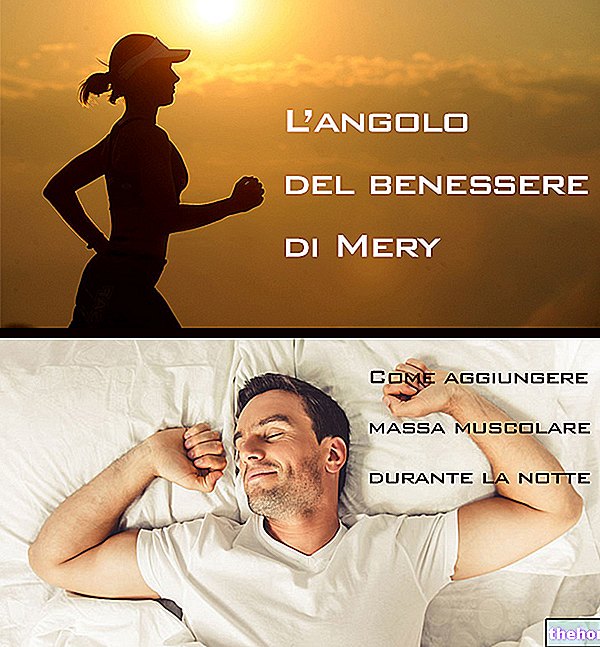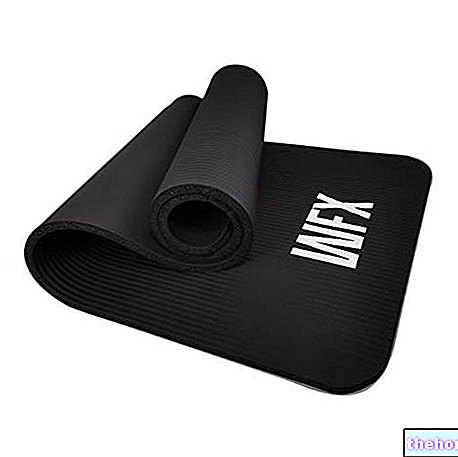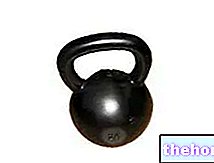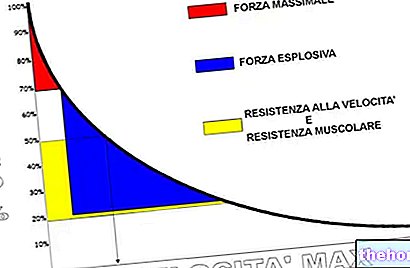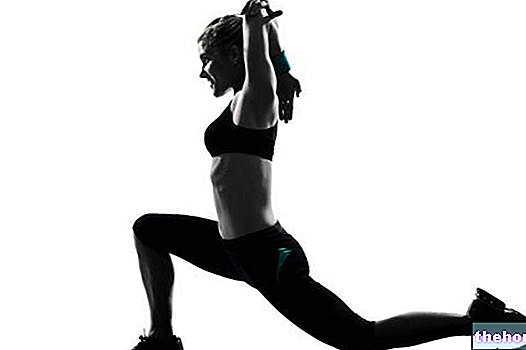Edited by Doctor Marcello Serra
" first part
The spindles are arranged inside the muscle and parallel to the fibers. When a muscle is stretched, the spindles contained in it are also stretched and send impulses to the CNS that cause it to contract. If, due to the contraction, the muscle wins. the resistance and shortens, the spindles that interrupt the sending of impulses to the CNS are shortened and the muscle relaxes.
Furthermore, spindles are sensitive to the speed with which they are stretched. An example is when a muscle holds an isometric contraction and suddenly the load is increased: if the new load causes the muscle to stretch quickly, there is a stretching of the spindles and a consequent reaction with the recruitment of new fibers, initially greater than necessary. .
The other proprioceptors, the Golgi tendon organs, we find them at the muscle tendon junction, ie in the portion where the muscle becomes tendon.
Like the spindles, the tendon organs are also sensitive to stretching, albeit to a lesser extent. That's why they need a more vigorous stretch to be stressed. The impulses produced by the tendon organs arrive at the CNS, where they form synapses, or bonds, with an inhibitory neuron, which in turn sends an inhibitory impulse to the muscle, causing it to release.
Both the neuromuscular spindles and the Golgi tendon organs work in synergy: the former to determine the right recruitment of muscle fibers, therefore the right degree of muscle tension (more harmonious movements); the second to prevent too high a load from endangering muscles and structures connected to them.
Muscles adapt to the activities we subject them to, so much so that they can become hypertrophic, more resistant, more easily extensible, or even retract. In most cases they reflect what the individual personality is. Often protracted activities, such as work activities, can change the length of the muscles, as can happen to the dentist's biceps brachialis or the cyclist's ileo-psoas. The retracted muscles can be advantageous for certain types of activities, but in others they can be the cause of postural variations, overloads, if not injuries. As a prevention it is necessary to carry out specific stretching exercises, which restore balance.
To subject a muscle to stretching means to initially stress the elastic component, the sarcomere, and then the connective components and tendons, if the stretching persists and at the same time the degree of amplitude is also increased.
The main and stable effect, after a stretching session, is at the level of the R.O.M. (Range of Motion), ie the degree of amplitude of the movement. The researchers justify this increase in ROM with the increase in the tolerance to stretching.
Other studies on stretching have also highlighted the decrease in muscle tone and excitability of motor neurons.
There are various types of stretching:
Static stretching: effective for improving recovery times, but contraindicated before strength training. There are two types of static stretching: static-active (maximum stretch never beyond the pain threshold for 15-30 "") and static-passive, in which there is the help of a partner who brings the muscles and joints to the point. in both cases you must not spring.
Dynamic stretching: mainly used by athletes. It is practiced to improve the ROM and consists in swinging the limbs in a controlled way. This type of stretching requires a high level of specialization, especially for the problems it can cause both in the joints and muscles and tendons, if performed without precautions (too high a rhythm; too wide ROM).
PNF: it is a method used mainly by physiotherapists in rehabilitation, so much so that it serves to promote and stimulate the response of the neuro-muscular mechanism through the stimulation of proprioceptors.
Contraction-relaxation: this method is confused with PNF. It is used to strengthen the muscle, stretched in the extreme radii of action. It must be performed with the help of a partner who, before the stretch, fixes a position in which the athlete must hold an isometric contraction of the muscle or muscles to be iron for 5-8 "". This method exploits the inhibition of the stretch reflex following the isometric contraction.
Contraction-relaxation of the antagonist: similar to the previous one, this method facilitates muscle lengthening thanks to an isometric contraction of the antagonist (held for 5-8 "") immediately before performing a static lengthening of the agonist.
Active global stretching: This method is based on the principle that only global stretches are truly effective. The stretches are performed through positions that lengthen entire muscle chains, thus leading to a "re-education" of the posture. It is an innovative form of stretching and consists in postural re-education for the prevention and treatment of alterations in the tonic balance of the muscles and in the autonomic balance due, in this case, to sports. It is "" active "first of all because those who practice it must control and limit all the" compensations "that occur as a result of the stretches and secondly because during the positions there are contractions against resistance associated with breathing.
At this point the question is legitimate: "What is the best stretching method?"
The answer is certainly complex, because it is linked to individuality and above all to the objectives (sporting and not) that each one sets. Following specific tests, the trainer will decide which strategy to use to achieve the desired goal.

